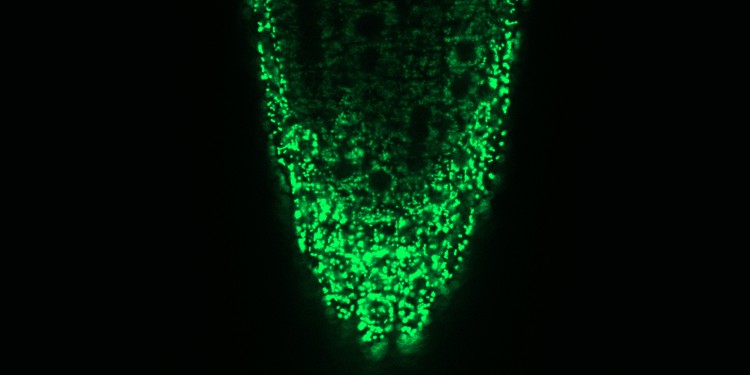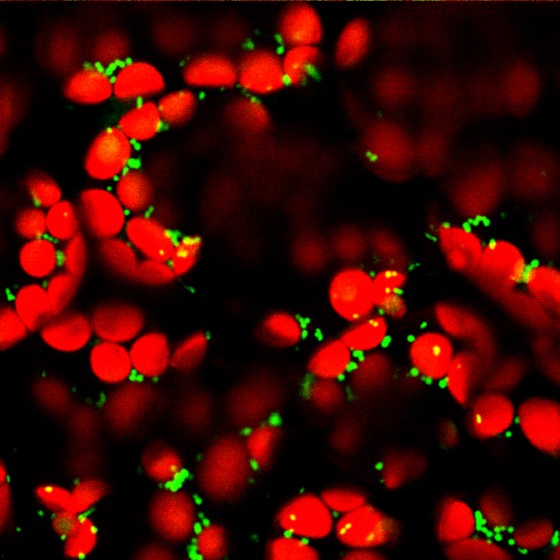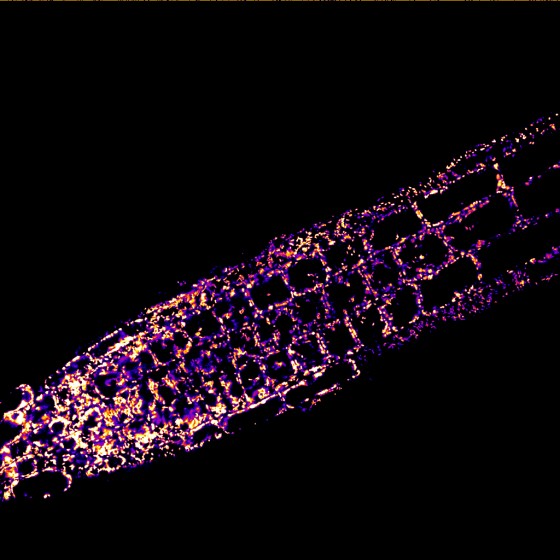
How calcium ions get into the cellular power stations of plants
Calcium is a very special nutrient. In the cells of most living beings calcium ions function as so-called second messengers to transmit important signals. The same applies equally to animal, plant and fungal cells. Through collaboration of several research institutes at a national and international level members of the “Plant Energy Biology” working group at Münster University, led by Prof. Markus Schwarzländer, and of the team led by Prof. Alex Costa at the University of Milan, have now identified the molecular machinery which enables calcium ions to be taken up into the mitochondria of plant cells – and that this form of transport plays an important role in their response to being touched. The study has now been published in the journal “The Plant Cell”.
“It is astonishing that such a simple ion can be so important for transmitting information,” says Markus Schwarzländer. “We assume that the calcium ions develop this potential through the exact place and the time of their deployment.” It has already been known since 1965 that plant mitochondria can take up calcium ions and in this way – presumably – be involved in calcium signalling pathways. How exactly the transport is made possible was, however, disputed for decades. For most ions, the inner mitochondria membrane is impermeable, but certain proteins in the membrane can ensure that the calcium ions can pass through this partially permeable membrane and thus enable signals to be transmitted in this cell organelle.
In the case of animals, the question of the identity of the mitochondrial calcium channel was solved in 2011 when researchers at the Universities of Harvard and Padua discovered the calcium channel MCU (mitochondrial calcium uniporter). This breakthrough paved the way for the finding that plants also contain MCU genes. What was still unclear, however, was whether these genes also form calcium channels in the living cell – not least because the uptake of calcium ions into animal mitochondria displays markedly different patterns from those into plant mitochondria.
Gene expression reveals importance of calcium ion transport for cellular power stations

After this observation, the team used plants with impaired mitochondrial calcium transport capacity to try to find out what role mitochondrial calcium plays for the plant and its fitness. In the case of animals, calcium ions in the mitochondria regulate energy production – but there were no indications of a similar function in plants.
By analysing the expression of the entire plant genome, the researchers were now able to demonstrate that the reduced transport capacity for calcium ions has an impact on the regulation of the plant hormone jasmonic acid. Jasmonic acid is a defence hormone in plants which provides protection against herbivores by being activated if the plant is wounded. Amongst other things, jasmonic acid also controls senescence – i.e. the regulated dying-off of tissues – as well as responses to mechanical stimuli such as being touched. The plants manipulated by the researchers showed slightly delayed senescence: in dark surroundings, the leaves lost their green pigmentation less rapidly. They also displayed a markedly weaker response to touch. “What is particularly surprising for us,” says Schwarzländer, “is that there is evidently a link between the transport of calcium ions into the mitochondria and the regulatory process steered by the jasmonic acid. The results show that molecular processes such as the absorption of calcium ions in the mitochondria, which have been conserved in animals and plants through evolution, can be used to serve new functions.”

The working groups led by Markus Schwarzländer and Alex Costa constitute, in equal parts, the core of the study. Lead author Dr. Cristina Ruberti had first been researching in Münster for two years before she moved to the Università degli Studi in Milan. The partners included teams from Halle, Heidelberg, Bonn, Lund (Sweden), Antwerp (Belgium) and Viçosa (Brazil).
Original publication
Cristina Ruberti, Alex Costa, Markus Schwarzländer et. al.: MCU proteins dominate in vivo mitochondrial Ca2+ uptake in Arabidopsis roots. The Plant Cell (2022); DOI: 10.1093/plcell/koac242
